Today we will show you how to draw a realistic baby face with the correct proportions. Drawing an adult face is hard enough, baby faces are so much more difficult. This article is also a reference sheet to the correct proportions of a baby and toddler head/face. Use this as a guide and try to memorize the information..bookmark this page to reference at a further date. This article comes from the book “Drawing the Face & Hands”..so if you like it, go buy it on Amazon.
How to Draw Baby and Toddlers Heads in The Correct Proportions – Drawing Babies
In the baby’s head, the bone structure is not yet completely developed. The jawbone, cheek bones, and the bridge of the nose are relatively smaller. This makes the baby’s face smaller in proportion to its skull, so that the face, from the brows down, only occupies about 1/4 of the whole area of the head. The cartilages of the nose are way ahead of the bone structure, so the little nose usually turns up, because the bridge above it is rounded and close to the plane of the face. The upper lip is longer, and the chin, being undeveloped, usually recedes or is well under the lips.
Only the iris of the eye is fully developed, which makes the eyes appear large and adorable. They appear to be further apart than the adult’s eyes because they rest in a smaller head. Eyes set too close together are unpleasant in a baby face and can ruin your drawing. A baby’s head can best be studied when the baby is sleeping. Otherwise we must turn to photographs. Babies are bound to wriggle and there is nothing that can be done about that. It is therefor important to know the genera proportions of the baby’s head and possibly even memorize it if you can.
[ad#draw]
You will find that a certain blockiness of planes and edges also helps to put vitality into your artwork / drawings of a baby’s face. Babies’ faces are so smooth and round that if we copy that quality too carefully the final effect may lack character.
The general shape of the baby’s head is a bulge attached to a round ball. The distances up and down between the features are relatively short, and the face seems quite wide. The first build-up of the basic shape of the baby’s face should have that cute baby look.
In the sketches above, the eyes rest in the lower half of the first quarter division. The top line is the line of the eye brows; the corners of the lips on the third; and the chin drops slightly below the line of the fourth division.
The picture above shows the four divisions for children three years to four years old (the toddler). Note that the eye brows are a little bit above the top line, and the nose, eyes, and mouth have been raised above the division lines. These changes make the baby look slightly older. Actually, we have allowed a little more chin and thereby lengthened the face slightly.
The pictures above show a number of baby heads, all drawn with the proportions that we showed, but differing a little in character as a result of slight differences in the placement of the facial features and the relationship of the face to the skull. Though the proportions vary only slightly, babies’ skulls may differ considerably in shape. We find high, low, or elongated skulls in babies as well as adults.
Changes in the infant skull take place very rapidly from the moment of birth thru the first year or two. It is in the infant stage that the skull takes shape. As the face of the baby develops, the face gets longer in proportion to the cranium, which has the effect of moving the eyes and brows upward in the head. Actually, the development of the lower jaw brings that downward, and the nose and upper jaw also lengthens. As a result of these changes, the eyes of an adult, and even of a teen, are on the middle line of the head. It is important to know this, because the setting of the eyes in relation to the middle line across the face is the direct way to establish the age of a child.
When drawing babies and children it seems easier to maintain 4 divisions that to use the 3 divisions of an adult face. While the actual head is smaller, the spaces between the features are proportionally wider. The eyes are wider apart; the upper lip is longer; the space from eye to ear appears very wide. You need to struggle with these proportions to make your drawing look like a baby and not a bald, old man. The baby mouth is more pursed when relaxed. The upper lip rises sharply to its peak and usually protrudes. The chin is small and well under, with often a little bit of fat under it.
In drawing a very young baby, draw the ball and plane with the facial plan much shorter. Put the brows on the halfway line. Divide the face from the brows down into 4 parts. The eyes touch the bottom line of the top division. The nose touches the bottom line of the 2nd division. The corners of the mouth fall on the bottom line of the 3rd division, and the chin drops slightly below the 4th or bottom division. The ear is under the halfway line.
Technorati Tags: drawing babies, drawing a baby, baby faces, drawing baby faces, baby proportions, baby facial proportions, drawing baby in correct proportions
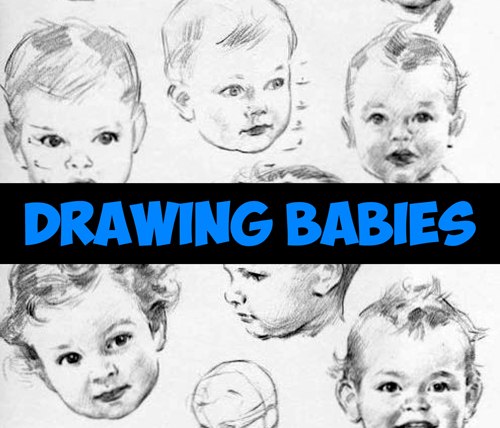
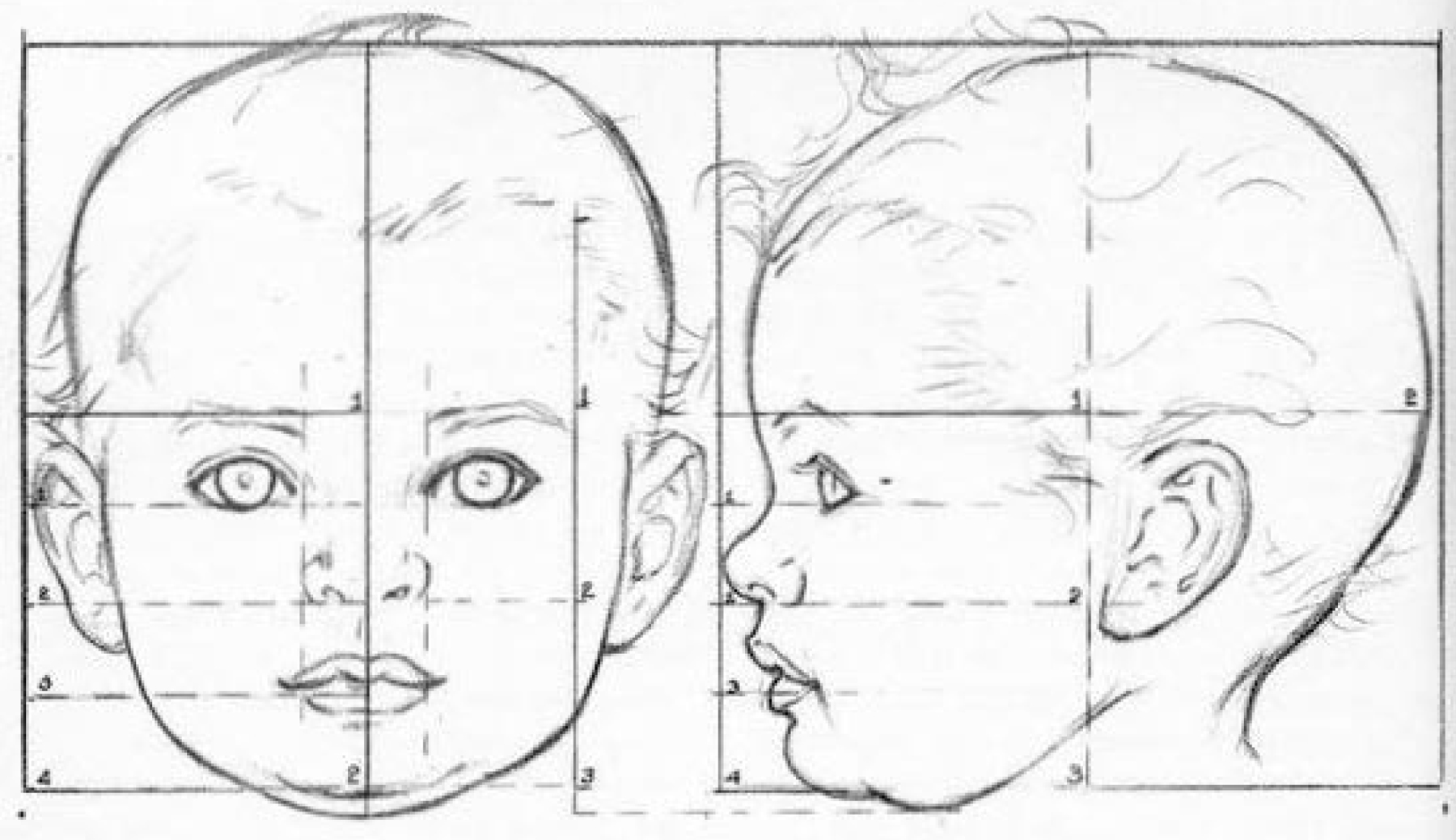
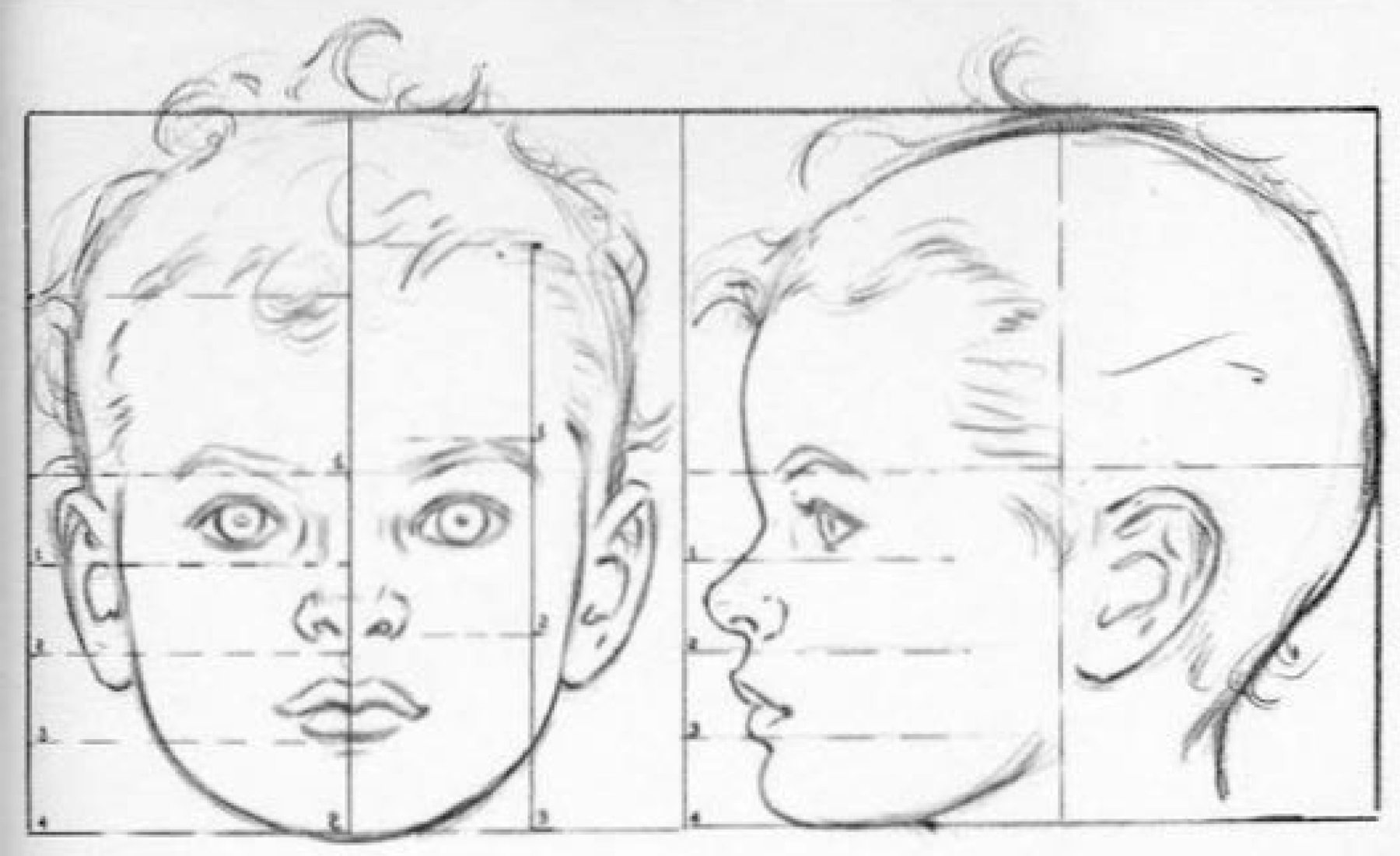
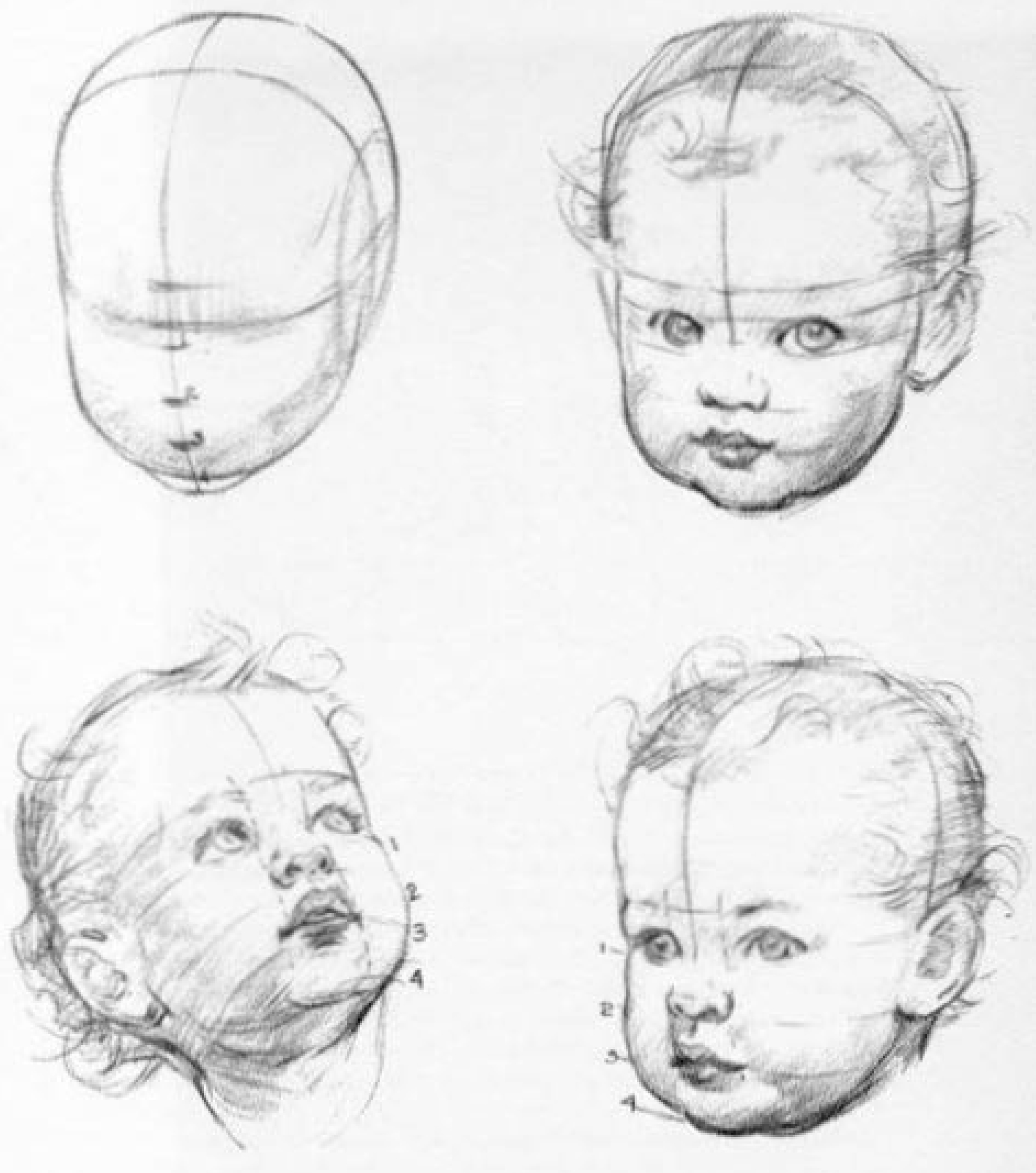
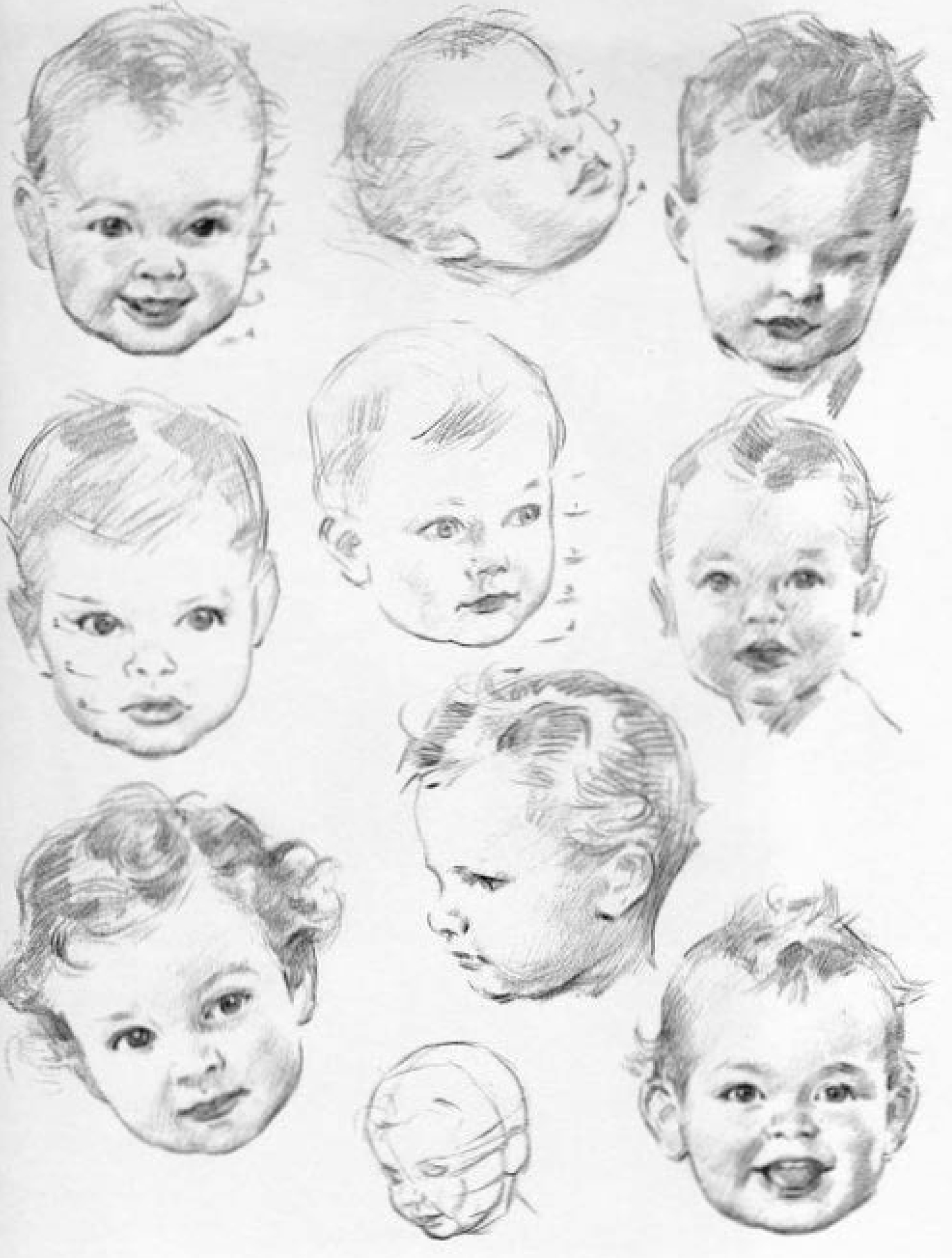
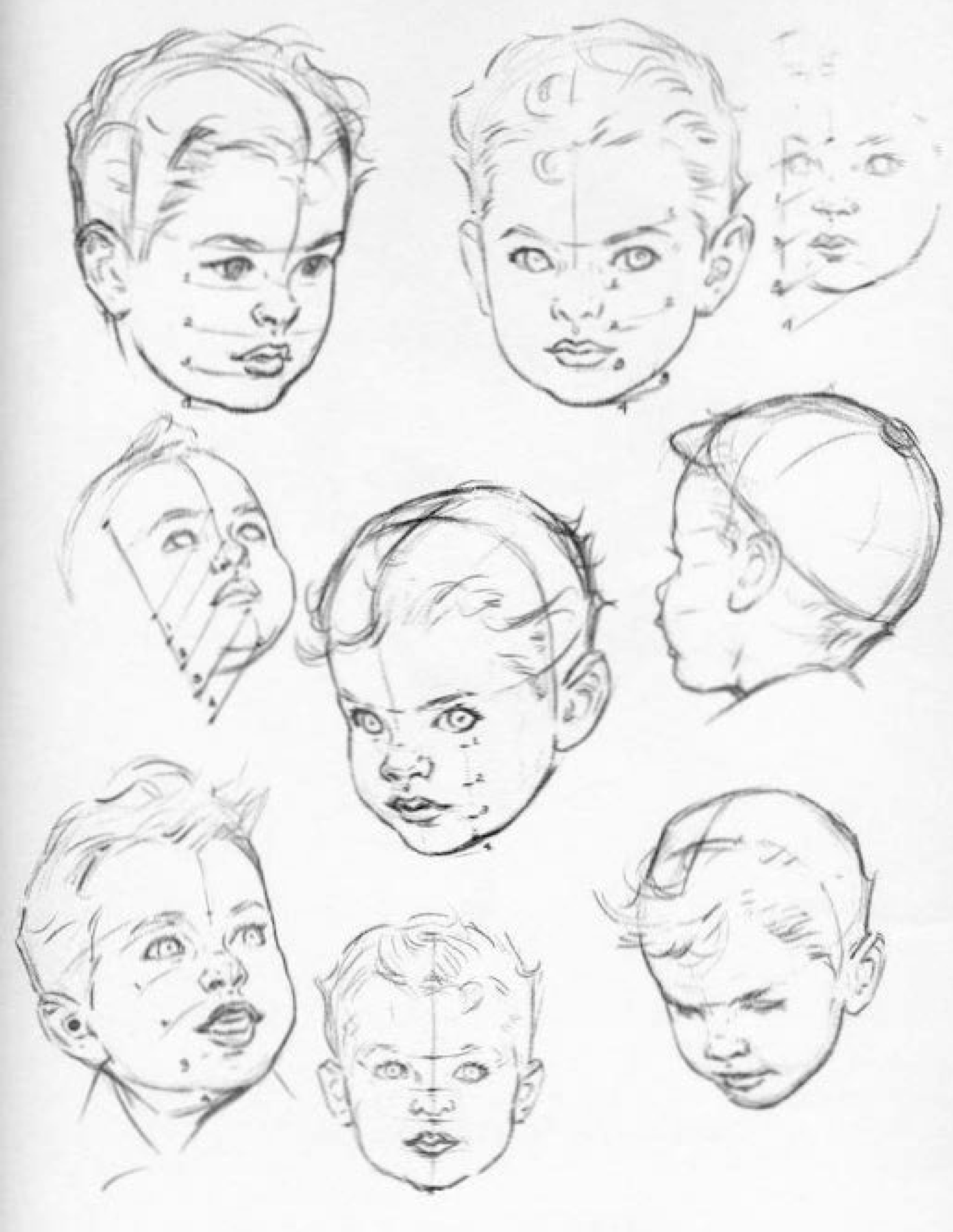
Why only white (Caucasian) babies?
It’s from a book that was published decades ago (maybe the 50s or 40s)
Who is the artist? These look like the 50’s?
Excellent for learning.
Can you please do a session on Babies and expressions
I dealt with this by having a picture of a real baby in front of me and modelling the drawing on that.
Wow! What a great idea!
I think this is a really good website and my students will really benefit from this – thanks!
Thank you so much, Sally!
Why babies hard to draw crawling and in any position they are so complicated